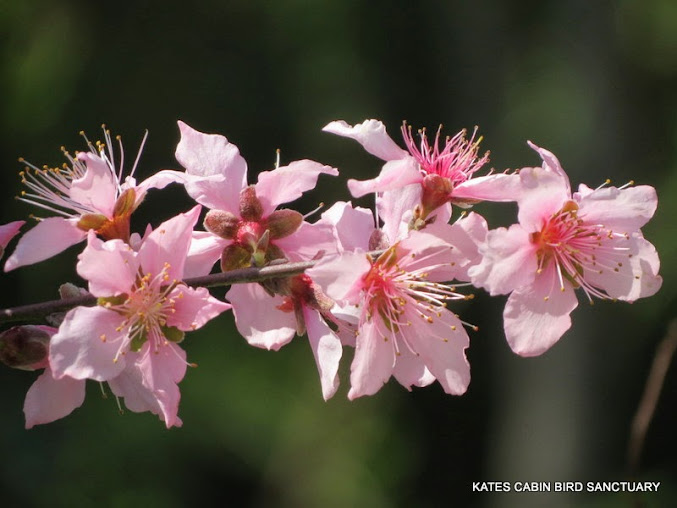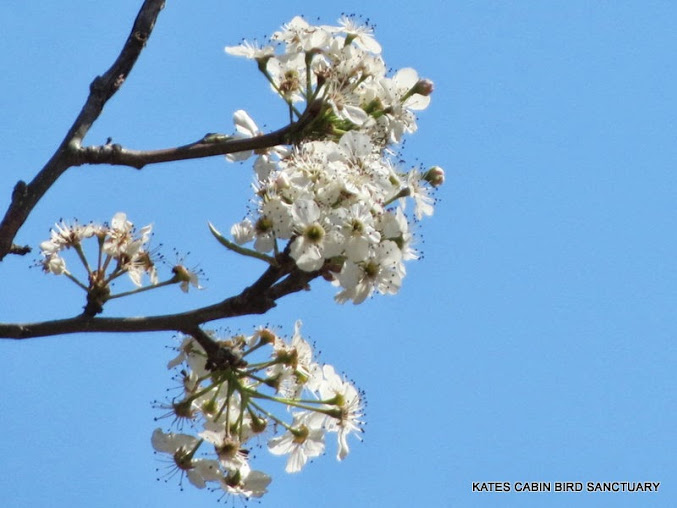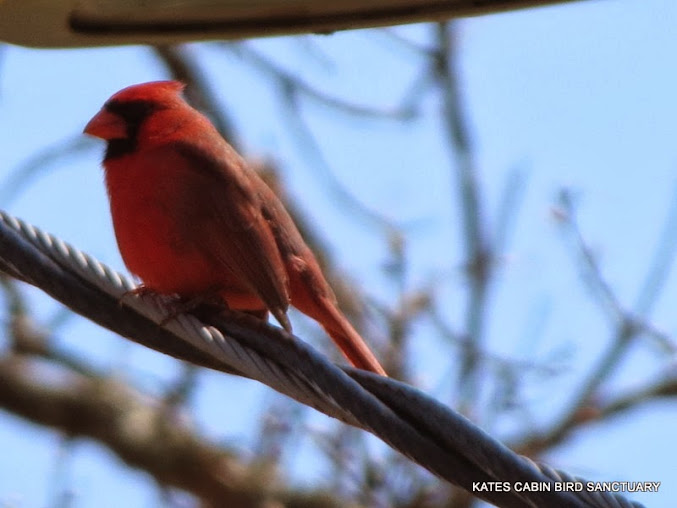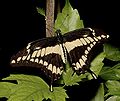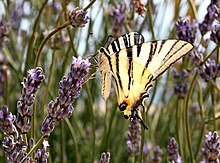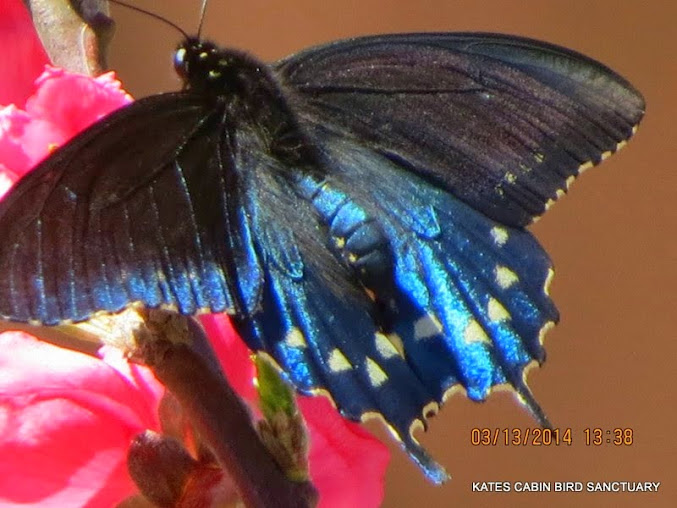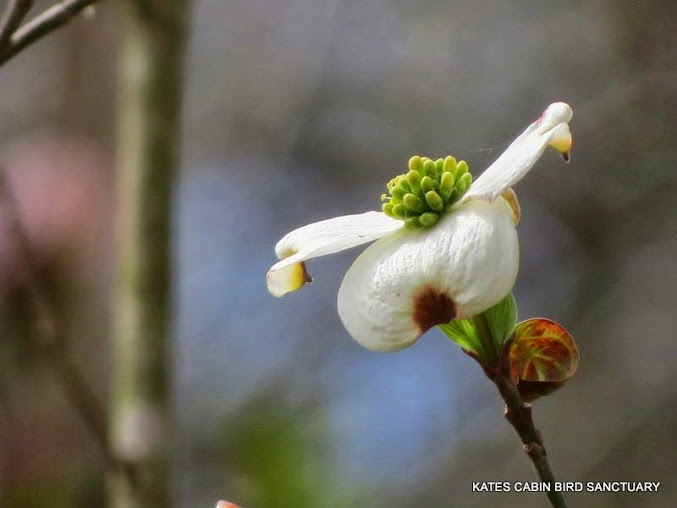
Hi Everybody!!
The Dogwood Trees are blooming which is a signal to plant seeds and little plants. Most people around here do not plant crops until the bloom of the dogwoods is finished. Sometimes there is a 'Dogwood Winter' where a late cold front freezes the blooms of the dogwoods. Not this year, we are in the clear in S. Texas. We did have a late spring cold snap, but it caught the redbuds and tulip magnolias a couple of weeks ago.Tonight, I have shared info from Wikipedia on the Dogwood Trees. If you have a shady spot in your yard, I suggest this tree for you. You will fall in love! Enjoy!


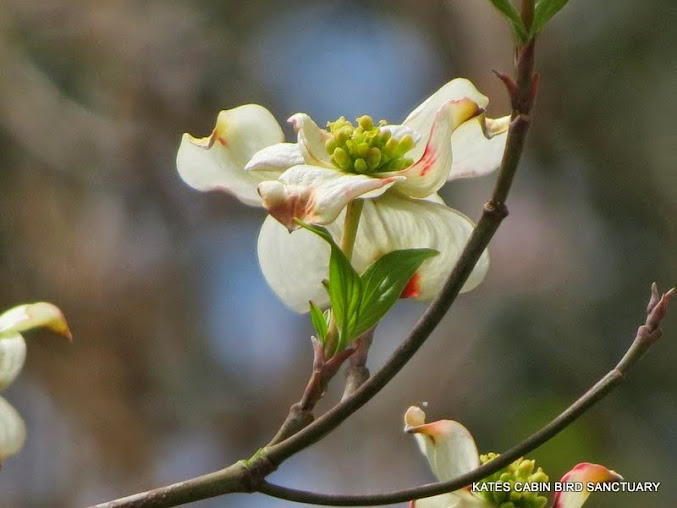
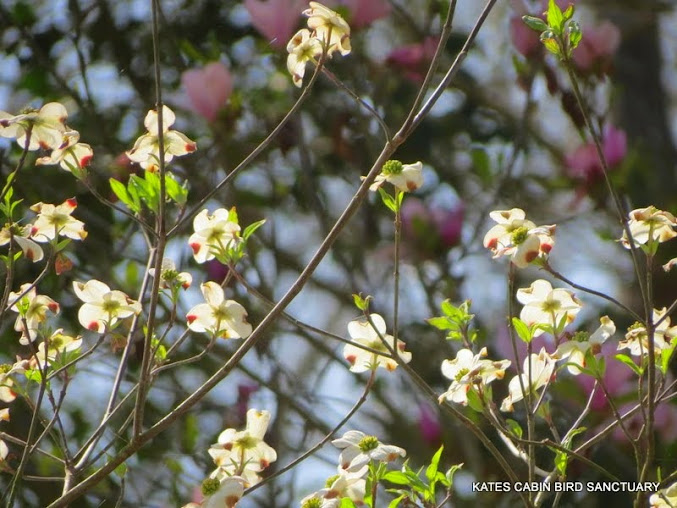

http://en.wikipedia.org/wiki/Cornus_(genus)
Cornus (genus)
From Wikipedia, the free encyclopedia
Cornus is a genus of about 30–60 species[Note 1] of woody plants in the familyCornaceae, commonly known as dogwoods. Most are deciduous trees or shrubs, but a few species are nearly herbaceous perennial subshrubs, and a few of the woody species are evergreen. Several species have small heads of inconspicuous flowers surrounded by an involucre of large, typically white petal-like bracts, while others have more open clusters of petal-bearing flowers. The various species of dogwood are native throughout much of temperate and boreal Eurasia and North America, with China and Japan and the southeastern United States particularly rich in native species.
Species include the common dogwood Cornus sanguinea of Eurasia, the widely cultivated flowering dogwood (Cornus florida) of eastern North America, the Pacific dogwood Cornus nuttallii of western North America, the Kousa dogwood Cornus kousa of eastern Asia, and two low-growing boreal species, the Canadian and Eurasian dwarf cornels (or bunchberries), Cornus canadensis and Cornus suecica respectively.
Depending on botanical interpretation, the dogwoods are variously divided into one to ninegenera or subgenera; a broadly inclusive genus Cornus is accepted here, with four subgenera.
| Cornus | |
|---|---|
 | |
| Cornus kousa var. chinensis | |
| Scientific classification | |
| Kingdom: | Plantae |
| Clade: | Angiosperms |
| Clade: | Eudicots |
| Clade: | Asterids |
| Order: | Cornales |
| Family: | Cornaceae |
| Genus: | Cornus L. |
| Type species | |
| Cornus mas L. | |
Common name "dogwood"[edit]
The name "dog-tree" entered the English vocabulary by 1548, and had been further transformed to "dogwood" by 1614. Once the name dogwood was affixed to this kind of tree, it soon acquired a secondary name as the Hound's Tree, while the fruits came to be known as dogberries or houndberries (the latter a name also for the berries ofblack nightshade, alluding to Hecate's hounds). Another theory advances the view that "dogwood" was derived from the Old English dagwood, from the use of the slender stems of its very hard wood for making "dags" (daggers, skewers, and arrows).[2][3]Another, earlier name of the dogwood in English is the whipple-tree. Geoffrey Chauceruses "whippletree" in The Canterbury Tales ("The Knight's Tale", verse 2065) to refer to the dogwood. A whippletree is an element of the traction of a horse-drawn cart, linking the drawpole of the cart to the harnesses of the horses in file; these items still bear the name of the tree from which they are commonly carved.
Characteristics[edit]
Dogwoods have simple, untoothed leaves with the veins curving distinctively as they approach the leaf margins. Most dogwood species have opposite leaves, while a few, such as Cornus alternifolia and C. controversa, have their leaves alternate. Dogwoodflowers have four parts. In many species, the flowers are borne separately in open (but often dense) clusters, while in various other species (such as the flowering dogwood), the flowers themselves are tightly clustered, lacking showy petals, but surrounded by four to six large, typically white petal-like bracts.
The fruits of all dogwood species are drupes with one or two seeds, often brightly colorful. The drupes of several species in the subgenera Cornus and Benthamidia are edible. Many are without much flavor. Cornus kousa and Cornus mas are sold commercially as edible fruit trees. The fruits of Cornus kousa have a sweet, tropical pudding like flavor in addition to hard pits. The fruits of Cornus mas are both tart and sweet when completely ripe. They have been eaten in Eastern Europe for centuries, both as food and medicine to fight colds and flus. They are very high in vitamin C. However, those of species in subgenus Swida are mildly toxic to people, though readily eaten bybirds.
Dogwoods are used as food plants by the larvae of some species of butterflies and moths, including the Emperor moth, the Engrailed, the small angle shades, and the following case-bearers of the genus Coleophora: C. ahenella, C. salicivorella (recorded on Cornus canadensis), C. albiantennaella, C. cornella and C. cornivorella, with the latter three all feeding exclusively on Cornus.

File:IMG 1527Dogwood.JPG
From Wikipedia, the free encyclopedia
Characteristics[edit]
Dogwoods have simple, untoothed leaves with the veins curving distinctively as they approach the leaf margins. Most dogwood species have opposite leaves, while a few, such as Cornus alternifolia and C. controversa, have their leaves alternate. Dogwoodflowers have four parts. In many species, the flowers are borne separately in open (but often dense) clusters, while in various other species (such as the flowering dogwood), the flowers themselves are tightly clustered, lacking showy petals, but surrounded by four to six large, typically white petal-like bracts.
The fruits of all dogwood species are drupes with one or two seeds, often brightly colorful. The drupes of several species in the subgenera Cornus and Benthamidia are edible. Many are without much flavor. Cornus kousa and Cornus mas are sold commercially as edible fruit trees. The fruits of Cornus kousa have a sweet, tropical pudding like flavor in addition to hard pits. The fruits of Cornus mas are both tart and sweet when completely ripe. They have been eaten in Eastern Europe for centuries, both as food and medicine to fight colds and flus. They are very high in vitamin C. However, those of species in subgenus Swida are mildly toxic to people, though readily eaten bybirds.
Dogwoods are used as food plants by the larvae of some species of butterflies and moths, including the Emperor moth, the Engrailed, the small angle shades, and the following case-bearers of the genus Coleophora: C. ahenella, C. salicivorella (recorded on Cornus canadensis), C. albiantennaella, C. cornella and C. cornivorella, with the latter three all feeding exclusively on Cornus.
Uses[edit]
Dogwoods are widely planted horticulturally, and the dense wood of the larger-stemmed species is valued for certain specialized purposes. Cutting Boards and other fine turnings can be made from this fine grained and beautiful wood. The red seeds are used by over 32 different varieties of game birds to feed upon, including quail.[4]
Horticulture[edit]
Various species of Cornus, particularly the flowering dogwood (Cornus florida), are ubiquitous in American gardens and landscaping; horticulturist Donald Wyman stated "There is a dogwood for almost every part of the U.S. except the hottest and driest areas".[5] However, in England, the lack of sharp winters and hot summers makesCornus florida very shy of flowering.[6]
Many species in subgenus Swida are stoloniferous shrubs that grow naturally in wet habitats and along waterways. Several of these are used along highways and in naturalizing landscape plantings, especially those species with bright red or bright yellow stems, particularly conspicuous in winter, such as Cornus stolonifera.
Most of the species in subgenus Benthamidia, including the flowering dogwood, are small trees useful as ornamental plants. When flowering, they are of rare elegance and beauty, comparable to Carolina silverbell, Canadian serviceberry, and the Eastern redbudfor their ornamental qualities.
Fruits[edit]
Cornus mas is commonly cultivated in Southeastern Europe for its edible berries, which can be eaten raw after slight bletting, turned into jams, and fermented into a wine.
Wood[edit]
Dense and fine-grained, dogwood timber has a density of 0.79 and is highly prized for making loom shuttles, tool handles, roller skates and other small items that require a very hard and strong wood.[7] Though it is tough for woodworking, some artisans favor dogwood for small projects such as walking canes, longbows, mountain dulcimers and fine inlays. Dogwood wood is an excellent substitute for persimmon wood in the heads of certain golf clubs ("woods"). Dogwood lumber is rare in the fact that it is not readily available with any manufacturer and must be cut down by the person(s) wanting to use it.
Larger items have also been occasionally made of dogwood, such as the screw-in basket-style wine or fruit presses. The first kinds of laminated tennis rackets were also made from this wood, cut into thin strips.
Dogwood twigs were used by pioneers to brush their teeth. They would peel off the bark, bite the twig and then scrub their teeth.[8]
Medicinal[edit]
Cornus florida has been proven to prevent the spread of malaria.[9] Their bark is rich in tannin and has been used as a substitute for quinine.[10]During the civil war confederate soldiers would make a tea from the bark to treat pain and fevers, and dogwood leaves in a poultice to cover wounds.[11]
Cultural references[edit]
The inflorescence ("flower") of the Pacific dogwood (Cornus nuttallii) is the official flower of the province of British Columbia. Theflowering dogwood (Cornus florida) and its inflorescence are the state tree and the state flower respectively for the U.S. Commonwealth of Virginia. It is also the state tree of Missouri and the state flower of North Carolina.
The poet Virgil makes reference to a haunted copse of cornel and myrtle in Book III of the Aeneid. The hero Aeneas attempts to break off boughs to decorate an altar, but instead the wood drips with black blood.[18] Anne Morrow Lindbergh gives a vivid description of the Dogwood tree in her poem Dogwood.[19]
A Christian legend of unknown origin proclaims that the cross used to crucify Jesus was constructed of dogwood.[20] As the story goes, during the time of Jesus, the dogwood was larger and stronger than it is today and was the largest tree in the area ofJerusalem. After His Crucifixion, Jesus changed the plant to its current form: He shortened it and twisted its branches to assure an end to its use for the construction of crosses. He also transformed its inflorescence into a representation of the Crucifixion itself, with the four white bracts cross-shaped, which represent the four corners of the Cross, each bearing a rusty indentation as of a nail and the red stamens of the flower, represents Jesus' Crown of Thorns, and the clustered red fruit represent His Blood.[21]
In the Victorian Era, flowers or sprigs of dogwoods were presented to unmarried women by male suitors to signify affection. The returning of the flower conveyed indifference on the part of the woman; however, if she kept it, it became a sign of mutual interest.[citation needed]
The term "dogwood winter", in colloquial use in the American Southeast, is sometimes used to describe a cold snap in spring, presumably because farmers believed it was not safe to plant their crops until after the dogwoods blossomed.[22]
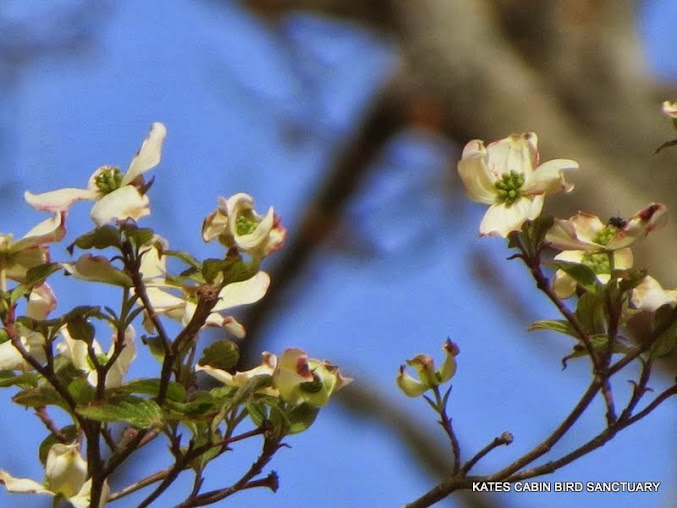

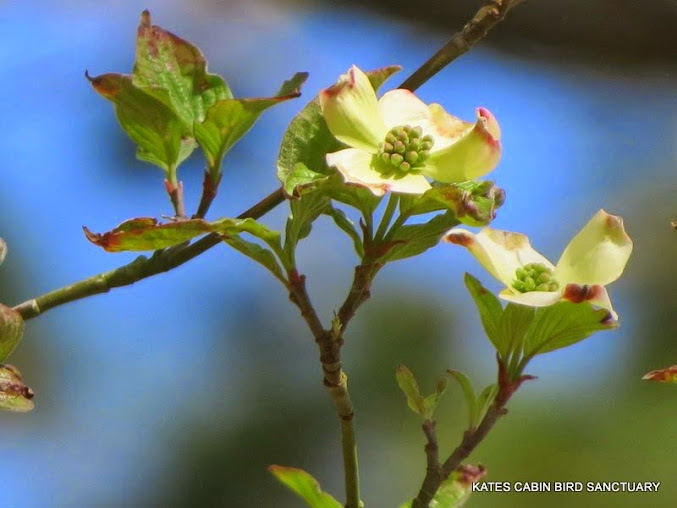
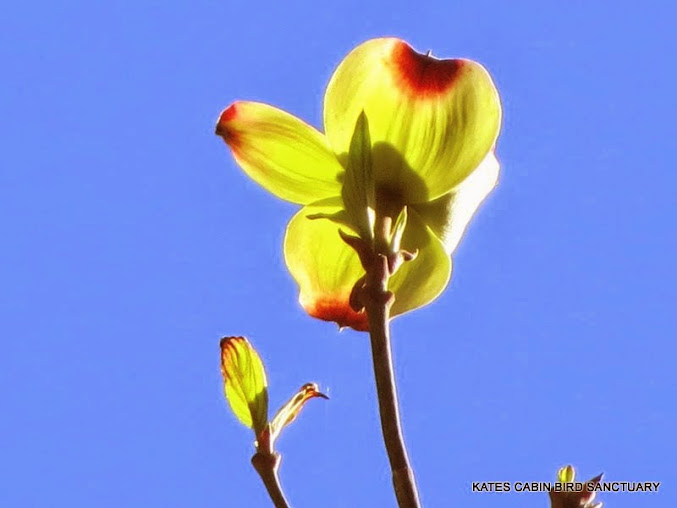


link to photostudy in G+ Albums:
https://plus.google.com/u/0/photos/117645114459863049265/albums/5993438514624360497
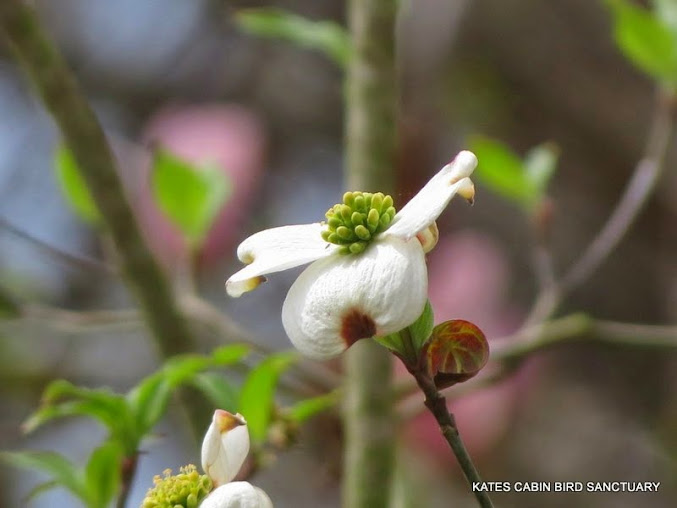

...this is brendasue signing off from Rainbow Creek. See You next time!
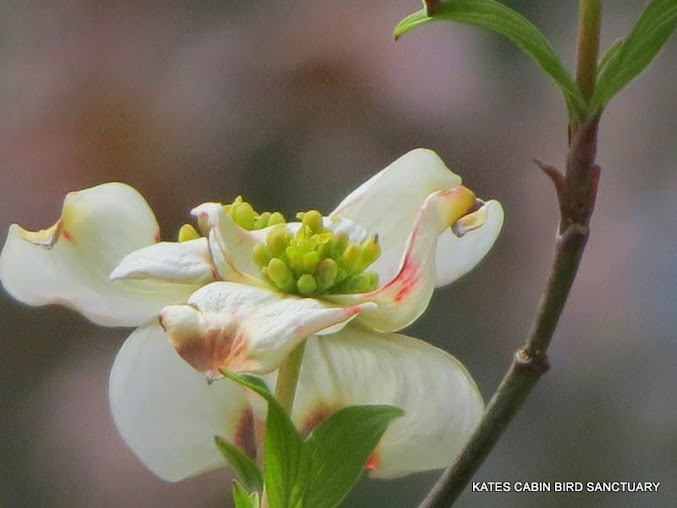
O+O
